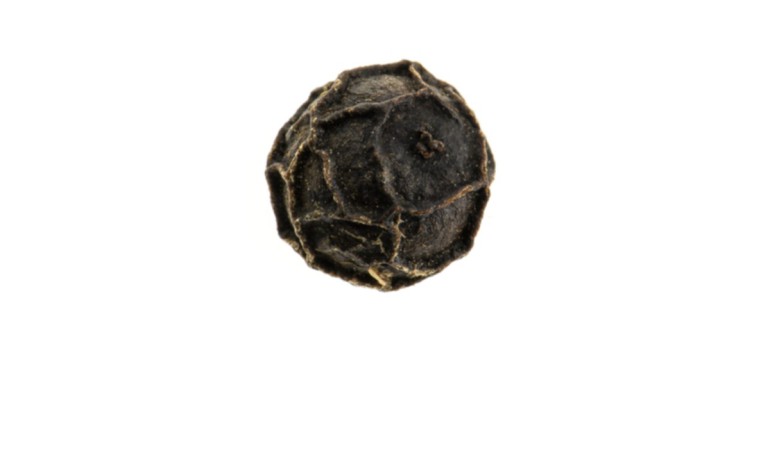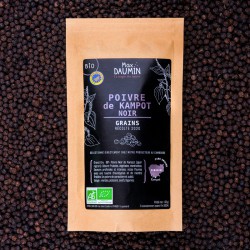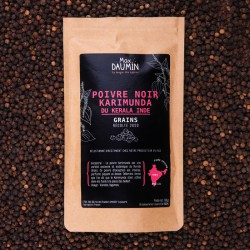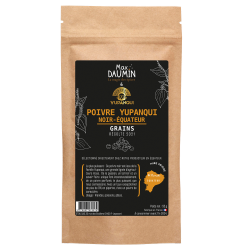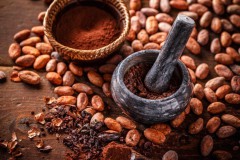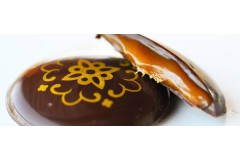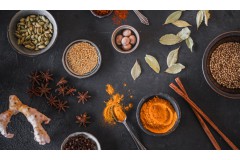Over the past two decades, the quality of the products we eat has become an essential part of our daily lives. Traceability, authenticity, naturalness, quality and the producers behind them have all become important criteria. So, over time, we've educated ourselves to better choose our products, whether it's oils, vinegars, coffees, chocolates, etc., we've acquired notions to better guide our choices towards quality.
But curiously, we're a little less knowledgeable about spices, vanillas and peppers. How to choose a good spice or pepper. Here's some information on choosing good quality premium peppers. Spices, vanillas and peppers are all products of nature, and depending on their origin, harvesting and processing methods, you can find both exceptional and poor-quality products.
We'll only be talking here about the Piper genus, the pepper we all have in our kitchen.
How do you define the quality of a pepper?
Several specifications...
There is no international classification of pepper quality. Some countries define pepper quality by taking into account criteria such as seed size, seed purity, sorting, moisture content and percentage of low-density berries.
In India, we refer to TGSEB (Tellicherry Garbled Special Extra Bold)TGEB (Tellicherry Garbled Extra Bold) TG (Tellicherry Garbled) from Malabar; Garbled Black Pepper MG-1, MG-2, from Malabar Ungarbled Black PepperMUG 1 to 4. In Vietnam, we speak of Bold, Asta, BB2, FAQ, Pinhead, this time largely taking into account the apparent density of the pepper (density of several peppercorns in a container). In Indonesia, we find the ASTA system (from the USA, American Spice Trade Association). In Malaysia, a similar system is introduced, but this time based on colors indicating the label (Brown label, Yellow label, Black Label, etc.) for black peppers and Cream, Green, Blue Label for white peppers. These labels are occasionally found on peppers sold in France. Little known in our country, they are rarely used. Even if this is a guarantee of quality, it's hard to remember all these sovereign quality labels.
How to choose a quality pepper?
Origin, a sure guarantee of quality.
Pepper's origins are very useful for the consumer. Like wine, pepper has its own grands crus. They are internationally recognized for their aromatic expression. The flavor of pepper will differ according to terroir, climatic conditions and the work of the grower.
The best-known crus include:
Karimunda, Malabar and Tellichery from Kerala, India.
Kampot from Cambodia
Muntok white pepper from Sumatra, Indonesia.
Black pepper from Sri Lanka
Phu-Quoc, named after its island of origin in southwest Vietnam.
Lampong, from Sumatra, Indonesia.
Sarawak, from northern Borneo, part of Malaysia.
Penja from Cameroon.
Black pepper from Madagascar
Voatsiperifery from Madagascar (a cousin of piper nigrum, piper borbonense).
Penja pepper from Cameroon and Kampot pepper are the only two peppers to benefit from a PGI (protected geographical indication). Their specifications are stricter than those of other peppers.
Origin is certainly a very good guarantee of quality. If it's clearly marked on the container, you're sure to get a good product. Scrupulously check what is indicated on the container or what the seller tells you. Don't hesitate to ask questions, as you'll find out from his answers whether he has mastered the sourcing of his products.
However, there are qualitative differences within each origin. Pepper is like wine: from a good bunch of grapes, you can make a good wine or an exceptional cru. The notion of mono-producer can be an asset, certifying that the pepper comes from one and only one farm, processed by one and only one producer. We're talking about a grand cru. The parallel with wine will enlighten you: this won't be a cooperative pepper. (from several producers).
What tests can I use to validate my choice?
It's often difficult to assess the quality of a food by sight, touch and smell alone. It's the same with pepper: taste it!
Take the time to taste it, to understand all its flavors. Premium peppercorns are spicy, but they also come with a whole host of fragrances. Like a perfume, you'll find top notes, middle notes and base notes. A quality pepper will express itself over time (a few minutes) in your mouth. Unlike a low-grade pepper that only stings for a few seconds.
There's also a test, which is regularly repeated, which consists of immersing peppercorns in water and then saying: “If the peppercorns float, it's because they're of poor quality and not concentrated in essential oil”. We'll see here that the latter doesn't help at all, and worse, will lead you in the wrong direction. Peppercorns dipped in water
How to recognize a good pepper?
Appearance: Observing the peppercorns can tell you a lot about their quality. Peppercorns must be whole, not damaged or broken. Each peppercorn should be clean and dust-free. The homogeneity of the peppercorns is an indication of how well they have been sorted.
Fragrances: Peppercorns have subtle fragrances that should be smelled. They'll give you a hint of their aromatic expression. Unlike false peppers such as Zanthoxylum (Timur, Sichuan, etc.), piper nigrum is less powerful to the sense of smell. When you inhale, the pepper should not make you sneeze. If it does, then you're in the presence of pepper dust; most likely an old pepper that no longer has much flavor. Ideally, you should smell a pepper that has just been crushed, to release all its fragrances.
Flavors: The best test is simply to taste a grain and appreciate its flavors.
Max Daumin
Max Daumin spices
Gold 2017-2018 Silver 2020 - 2021 Bronze 2019 | Trophée national de l'épicerie fine
Artisan Producer of the Collège Culinaire de France 2021
What is a good pepper? How to recognize a good pepper?
Posted by
Max Daumin
11/18/2021
Articles by Max Daumin
